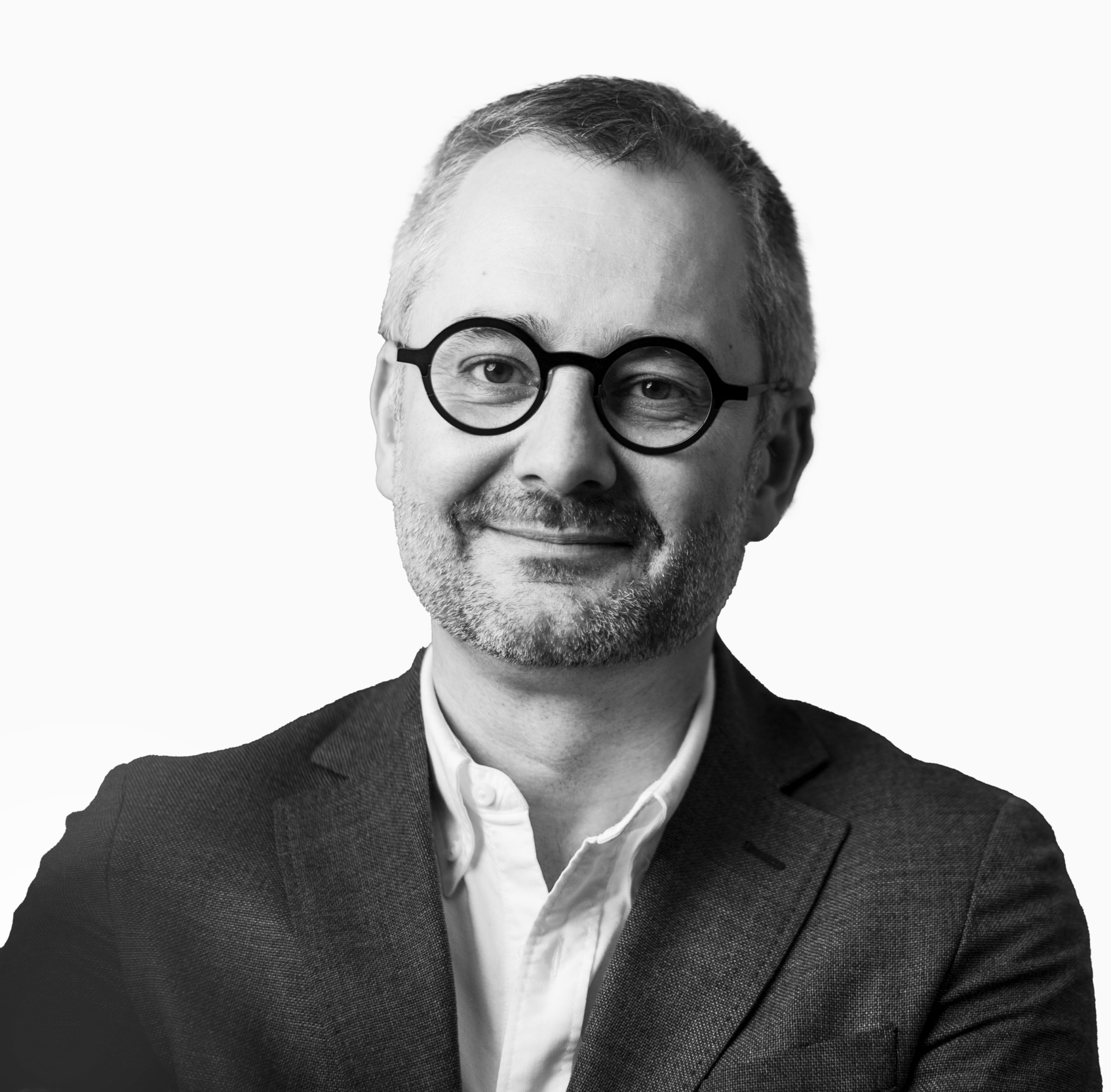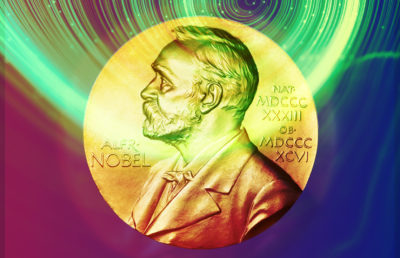In his latest book, Northeastern University professor Albert-László Barabási reveals how professional and social networks help to determine whether people succeed or fail.
Growing up in an ethnic Hungarian family in Romania during the Communist regime of Nicolae Ceaușescu, Albert-László Barabási never bothered to learn English. “My worst grades were always in English because I thought, Why study it? You can never leave this country,” explains Barabási, director of the Center for Complex Network Research (CCNR) at Northeastern University in Boston. “It wasn’t until I got to the University of Bucharest and became interested in research that I understood the importance of being able to read academic papers in English.”
Barabási emigrated from Romania to Budapest with his father in the summer of 1989, a few months before Ceaușescu was overthrown, and completed a master’s degree in physics at Eötvös Loránd University two years later. But it wasn’t until after he’d earned a Ph.D. in physics at Boston University in 1994, while working as a postdoc at IBM’s legendary Thomas J. Watson Research Center, that Barabási became interested in networks. At the time, network science was a relatively obscure field that traced its roots to the study of social networks by anthropologists, mathematicians and psychologists. Barabási saw parallels in physics and wrote his first paper on network topology in 1995. That same year, he took a position as an assistant professor of physics at the University of Notre Dame and continued to do research on network science. By 2000, he had discovered the concept of scale-free networks, in which the distribution of linkages of nodes follows a power law. (Most nodes in a network have just a handful of links, while a few have an enormous number of connections.)
In 2007, Barabási joined the Department of Physics at Northeastern and established the CCNR. The lab focuses on three main areas of research — pure network science and quantitative tools to analyze networks; the science of success (which looks at individual careers and tries to understand how network factors affect them); and biological networks and disease — and has published more than 200 papers. “That’s not a lot of papers, because we have about 30 people in the lab,” Barabási says. “As I always tell my students and postdocs, ‘Guys, I don’t care about papers; I only care about discoveries.”
Barabási’s passion for network science has led him to write three general interest books on the subject. The first, Linked, published in 2002, introduces readers to the science of networks through its application in real life. Bursts, which came out in 2010, explores how to use network knowledge to try to predict seemingly random behavior. The third book, The Formula, released last fall, focuses on the science behind a person’s success or failure. Barabási, 52, recently met with WorldQuant Global Head of Content Michael Peltz to discuss how he became interested in the science of success and what new areas might offer attractive opportunities to apply network science.
When did you get interested in network science?
Albert-László Barabási: In 1994, when I was working in the research division at IBM in Yorktown Heights as a postdoc and living in the Bronx. Walking around New York, I realized that there are so many complicated networks to keep the city alive that we don’t know much about, from the electrical cables and water pipes to the then-burgeoning internet.
At the time, I was reading a book about computer science with descriptions of different challenges. One of them was what we call the Kruskal problem, which is actually like finding the shortest path on the network. That fascinated me. As I was reading the literature, I realized that the research was all based on the random network model — and there’s no way this could be random. I mean, try to randomly wire the electricity or pump water in the city and see what happens, right?
I said, “Okay, there must be something interesting that we have not explored yet.” So I wrote my first paper about networks, and I could not get it published. It never got published. It wasn’t until the end of ’99 that I finally got a paper on networks published. What had changed by ’99 is that we had run across a World Wide Web database and we were able to map it. That gave us a number of discoveries that were suddenly not only publishable but were published by the best journals. So that was kind of a total change in attitude.
By then, the subject was very topical.
That’s right. But so was my original network paper five years earlier. I think I was way too early, in the sense that I wrote that first paper and submitted it to four or five journals and no one said it was wrong. The response from the journal referees was, Who cares? And obviously the lack of interest was partly my fault because I could not articulate why I was doing the research. But partly the scientific community was not ready for that. And in 1999 they suddenly became ready.
Your experience would seem to illustrate the secret for scientists getting published that you write about in The Formula.
Yes, I’m exhibit A for that process, in the sense that when the final discoveries came, I already had enough experience with good journals that I could place my paper in the right one so that the community would pay attention. I’m finding elements in my life of many things I write about in The Formula and that our lab discovered since we started looking at success.
There is a lot of research to show that if you are born in the wrong place, you’re born in the wrong place.
How did you branch out from network science to studying success?
We spent 15 to 20 years looking at the structure of these very large and complicated networks around us — social networks, professional networks, biological networks, you name it — but it was always about the architecture of the systems and characterizing it. We never asked, “What does this network do for the node itself, for you?”
So you are a node in the social network, in the professional network; would your position in the network help you or pull you back? And when does the network matter and when doesn’t it? This last question is actually very important.
How does that relate to success?
Like most people, when I started my career, I always approached it that success is all about performance. That is, if you perform well, you will be successful. But, of course, the further you get with your career, you understand it’s not that simple, right? There is a lot of research to show that if you are born in the wrong place, you’re born in the wrong place. You might be a mathematical genius, but you probably won’t be successful if there’s no mathematics teacher around you to cultivate that genius. That’s kind of the simplest example, but even in the more advanced cases, it’s really what resources and people and ideas you have access to that very much determine what you can do with that real performance.
We thought that knowing networks would help us to quantify success. But we soon realized that success is really about much more than the network itself. Because first we need to understand how performance relates to success, and what is performance and what is success? That’s when we stumbled upon this very interesting distinction that we’re using in all our work. Performance is what you do — how many good papers you write, how fast you run, what trades you actually make on the stock market and how much money they make. Success, however, is about the community’s perception of what you do. How much do we see of your performance? How much do we acknowledge it, and how well do we reward you for it? Or, in other terms, your performance is only about you, but your success is about us, because it’s the community that provides you with those measures of success.
There’s not a single measure of success. But what is common between the different measures is that they’re always collective. When it comes to money, it’s the community that gives it to you, right? It’s your bosses who pay you. In the case of citations, it’s the other people citing your work and writing research papers. For musicians, it’s other people who are buying your album and listening to you. When it comes to pure fame — how many people are curious about you and how many people know about you — again, it’s other people providing to you.
When did you come up with the idea for the science of success?
The term “science of success” started about ten years ago with Dashun Wang, who was a fabulous Ph.D. student in my lab. His first project was to help a postdoc on predicting disasters. He wrote a really cool paper about how you can use mobile phone data that the service providers are collecting to detect that some part of the country has something really bad happening. I thought this could be a game changer, not only from our ability to detect the patterns, but it could also provide actionable information for emergency personnel.
We could never get the paper published. The same thing happened to us with our network paper 15 years earlier. Journal after journal rejected it. And during this process, the project was done, and Dashun came to me: “Okay, what’s next? What should I do? I’m happy to do anything, except not another disaster.”
So we labeled the paper “the disaster paper.” And I was laughing. I said: “Sure, okay. So how about success? Why don’t we do the science of success?” And I was really joking, but then we kind of looked at each other and said, “Oh, this is actually not such a bad idea.”
Why did you decide to write a book about success? How does that fit into what you do as a scientist?
So there’s a history of this. My mother was a theater director and a literature teacher originally. My father was a historian who wrote many books toward the end of his life. I grew up in a family of what we called intellectuals back in Eastern Europe, with interest in writing and books. And that took me to the point that when I was in college in Bucharest, I was earning part of my money on the side as a journalist on a national publication. So I clearly had the ambition to write. And then when the network science came along, I felt the urge to communicate the discoveries, and I wrote my first kind of general book, Linked.
So through Linked and then Bursts and eventually The Formula, I write about things that I’m really passionate about, which is my life’s work. And I only write when I feel like the results have reached the level of maturity that there are discoveries that really should resonate with a general audience and they cannot reach a general audience, partly because they’re locked up in scientific papers. The goal of these books is not to reach the scientific community. They are really serving a completely different market, opening different types of doors and engaging people at a very different level.
You write about five laws for success in The Formula. Are they equally important, or does one law stand above the rest?
That’s like asking to what degree Bernoulli’s law is more important than the role of gravitation, right? For example, if I walk down the street in New York City, gravitation matters; Bernoulli’s law doesn’t matter. However, if I start flying, then it’s really Bernoulli’s law I have to care about, because that’s what gives the airplane the lift.
In the same fashion, the five laws of success really apply to everyone if we’re in the right situation. It’s not like, “Oh my goodness, this law doesn’t apply to me.” All the laws apply if you put yourself and your career at the right stage.
Can you elaborate?
Sure. For example, the fourth law is really about teamwork. If you don’t work in teams, it’s not relevant for you. You may not work in teams today, but you will tomorrow. And the reason you will tomorrow is because much of the creative work and the execution is moving to teams. The world is becoming so complex that there’s really nothing we can achieve alone. Even though only one person’s name may be on a paper, at the end of the day it’s a team effort to make it happen.
The concept of teams raises lots of questions, and I devote one big law to them. I look not only at how you pick the right team and how you engage in the right team but also how you get the credit for the work that you do in the context of the team.
But if you are in an area where performance truly drives success because performance is measurable, then it’s the first law that matters for you. The first law says that performance drives success, but when performance can’t be measured, networks drive success.
How does that work?
If you are in an area like sports, where there’s an objective measure of performance, you can count on your performance determining how successful you will be in that particular profession. If, however, you are in art, where performance is inherently impossible to measure, then the networks matter.
I try to explain in The Formula not only when networks matter but which networks matter and how a network matters for you. Because we often are being told, “Oh, you have to be networking,” and that’s kind of a mindless device these days. What we’re learning through our research is that it’s not arbitrary networking that is really key. You need to understand which networks determine the success in your particular profession.
For example, in art the predictive network is not who you know but the institutions that accepted your work. And there are links between the institutions and not between you and the institutions or you and other people in your profession.
So you would tend to be, “Oh yeah, if I know a bunch of other artists, I will be a successful artist.” No, actually, what really matters is that you get access to the right institutions and how those institutions view each other. If you start on the wrong foot or in the wrong place, it’s very difficult to move up to the higher level. If you start in the right place, it’s much easier. But it’s a very large network, and it’s very hard to objectively decide as a starting artist, or even as an experienced artist, which is the right institution and which is not. The network-based approach provides us that.
Where do you see new opportunities to apply these ideas?
Each of those opportunities has been a huge amount of work for us. The art work took four years; the science work was about a five-year process. So there are lots of opportunities, but I think right now the one that we’re really gearing up to do — and I think is very promising — is the quantified entrepreneur space. And that’s huge. The entrepreneur space includes just about everything other than art and science and has such a degree of richness. In hindsight, we got lucky with art and science because they tend to be relatively low dimension spaces in the sense that the predictors of success are relatively few and well mappable. We think that the entrepreneur space is far more heterogeneous. The challenge for us will be to capture that heterogeneity.
Is there ample data available?
Yes, the datasets are available. The challenge is really more, how do you conceptualize the research? And this is really why the art project turned out to be very successful — because we didn’t do it the same way as we did the science project. We understood in the art case that it was really the network that we needed to focus on. In the science space, we started out looking into the network, and we learned it’s the performance characteristics and the career path that really matter. The network is important as well, but it’s not the defining feature.
So we’re trying to bring the same openness toward each area we approach. Even though we are network scientists, we’re not married to the network perspective. We use it when it has predictive power. We ignore it when it doesn’t.
In the entrepreneur space, the question is to what degree prestigious institutions, personal connections and performance, and the ability to get something done together create success. And what are the relative rates of each of them? We don’t know the answer ahead of time. We will know as soon as we start crunching the data.
There is academic research out there in terms of performance, right?
Yes, but most of it is focused on companies. We’re interested in individuals. In a way, there’s lots of research previously focusing on specific artworks or specific research papers and why they are successful and how they are successful. What we brought as a new perspective is that you really cannot view the impact of one particular work of art or paper properly unless you put it in the context of the career of the individual.
And in the same way, there’s lots of work about companies, organizations. But there is very little work on the aspect of how to piece together the career of an individual and how the career path actually impacts future success. We tend to look at previous accomplishments to look at future success. We don’t tend to look at failures to see how they impact future success because we have little data about that. We want to put together the failures with the successes and see how they together lead to future success.
So you’re looking at individuals, not at companies?
Correct. Because in the end we’re interested in the entrepreneur space. We don’t really care about how IBM is running its business. There’s already a huge amount of research in that area. Every business school will have people who focus on company success. Companies are aggregates of many, many different people, and they have their own culture.
The company space is overresearched, overanalyzed. We care about what happens to you as an individual and how you navigate that space. And when do you choose IBM and when do you choose to exit IBM and start your company?
Have you applied what you write about in The Formula to your own career?
Well, by the time I understood many of these patterns, I don’t think I needed to benefit from them. But there were lots of aspects of the work that actually had an impact on my life. One of them is that I really approached my career from a pure performance perspective at first, and it was the network thinking that really helped me understand that this had to change. When I became an assistant professor, I had to retrain myself to have the courage to go after people who were in my space and meet them, because I understood that I could not be a scientist without those professional and social links. It was not only about writing papers.
And then, of course, by the time the ideas for The Formula came along, I think they had a much bigger impact on my students and on my children than on me. Because now I had the data at my fingers to advise them in a meaningful way. I don’t need that advice any longer. I’m pretty comfortable where I am.
I include lots of examples in the book. I talk about the immediacy effect of how when we’re not able to really judge performance when we’re interviewing candidates for a job, we turn on other mechanisms to decide. When choosing from a pool of similarly qualified candidates, we tend to hire the last person interviewed. I use that principle a lot when I coach my students on when and how to go for an interview.
I also did lots of research that helps me advise students about where to go to college. For example, is it Harvard that makes you, or is it you who makes Harvard? And the answer is clear: It’s you who makes Harvard, because for most kids, actually going to Harvard doesn’t really benefit their career. The research shows that the best predictor of long-term success is not the college you went to; it’s the highest level of college that you applied to. So, continuing the example, if you go to Michigan but you applied to Harvard, you will have the same long-term performance and long-term income as the kid who had the same grades finishing high school but chose to go to Harvard.
And that’s because, given your grades — that is, given your performance — where you apply actually shows where you think you belong and captures that unmeasurable thing that is ambition.




